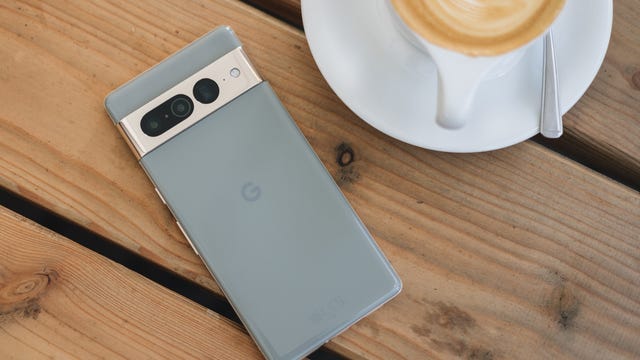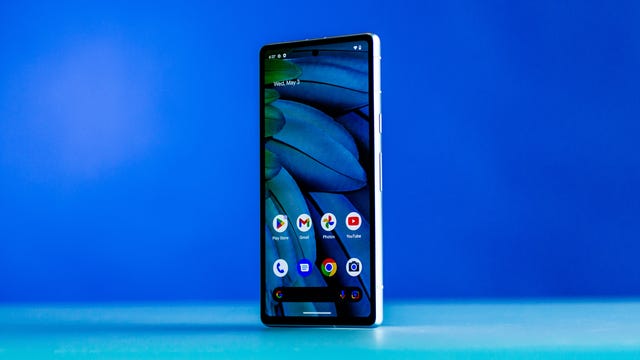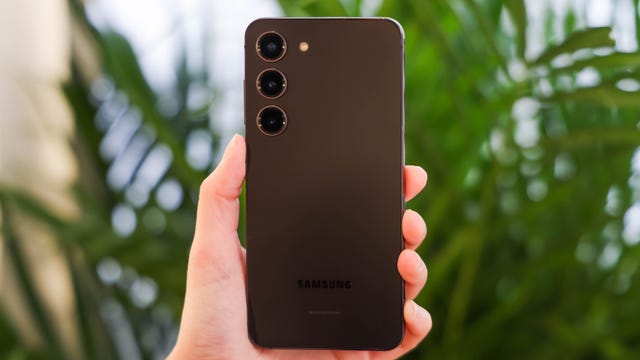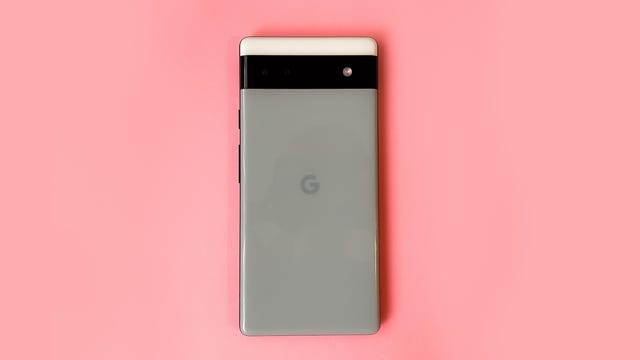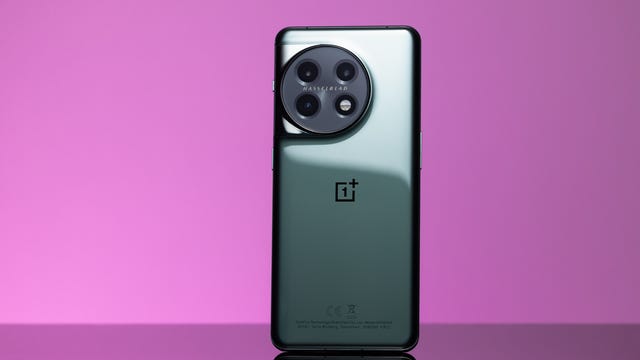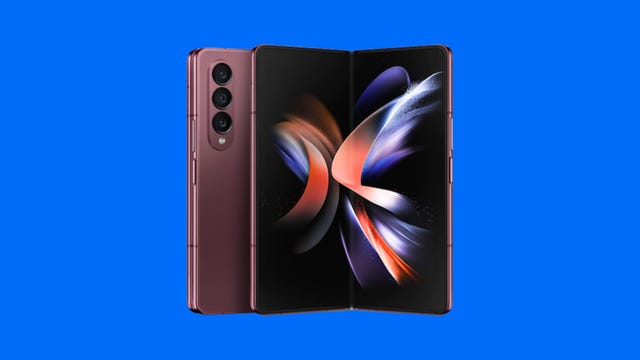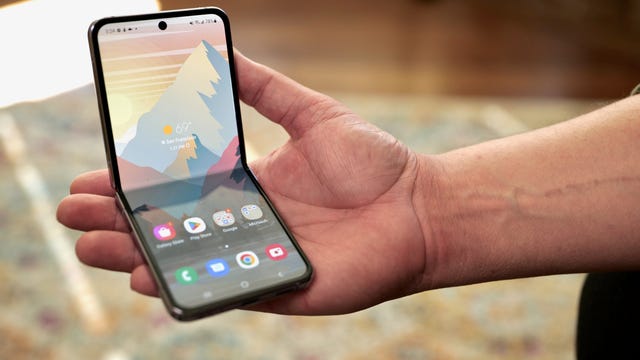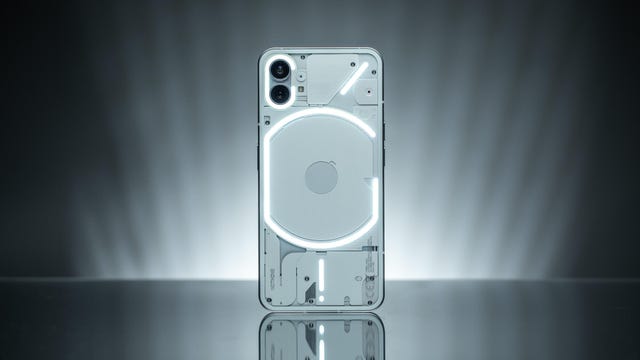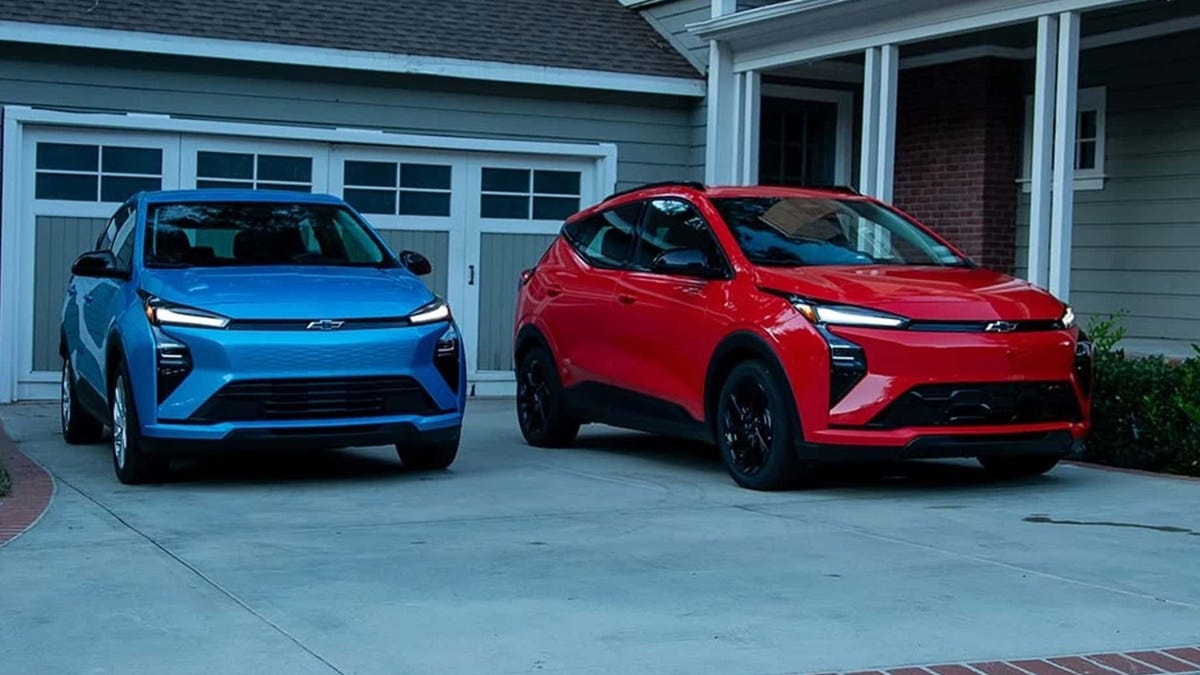Technologies
Best Android Phone of 2023
The Galaxy S23, Pixel 7 Pro and others made our list.

There’s certainly no shortage of choice when it comes to Android phones, whether you prefer Samsung, Google or OnePlus. Android devices come in a wide variety of sizes, shapes and prices, meaning there’s something for everyone. But having so many options also means the buying decision can be difficult. If you aren’t sure where to start, you’re in the right place: We’ve tested and researched all the best Android phones you can buy in 2023.
A great phone should have high-quality cameras, long battery life, compelling software features and 5G support. We considered these factors when putting together our list of the best Android phones in 2023, which you can check out below. CNET’s team updates this list periodically as we review new products.
What is the best Android phone?
The Google Pixel 7 Pro sits at the top of our list of best Android phones, largely because it has some of the best cameras found on any phone sold today and represents one of the best values for your dollar on this list. The Pixel 7 Pro also packs a number of convenient features that are unique to it. There are calling tools like the ability to wait on hold and notify you when a representative becomes available. You can also sharpen old photos that are out of focus to make the subject look clearer. And then there’s the ability to automatically caption videos, podcasts, phone calls and more.
Advertiser Disclosure
There are plenty of other excellent choices out there, however, even though the Pixel 7 Pro is our current favorite.
Best Android phones of 2023
Like:
• Refreshed design looks great
• Superb cameras
• Clean and enjoyable interface
Don’t like:
• Battery life could be better
Google’s latest flagship phone, the Pixel 7 Pro, isn’t a huge overhaul from the already excellent Pixel 6 Pro Google launched last year. But it’s taken that winning formula and made some key tweaks to almost every element, resulting in a superb phone that’s bliss to use. The refreshed camera can take stunning images too, earning its spot among the best flagship phones around. It typically sells for $899, but Google currently has it on sale for $150 off.
Like:
- Fast performance
- Excellent main camera
- Bright screen
- Included stylus
- Double the storage in the base model
- Four generations of Android OS updates
Don’t like:
- High price
- Photos don’t always look natural
- No improvements to fast charging
The Galaxy S23 is a lot, but in a good way. It’s more than most people need in a phone, but that doesn’t make it any less impressive. Samsung made improvements to the camera’s resolution (200 megapixels compared with 108 megapixels), color tones and dynamic range, while retaining the same edgy design and massive 6.8-inch screen as its predecessor. There’s also a new Qualcomm Snapdragon 8 Gen 2 processor that’s been optimized specifically for Samsung’s phones, which brings faster performance compared with the Galaxy S22 Ultra.
It may be an understatement to call this phone expensive: It starts at $1,200. But people willing to pay more for a giant screen and a high-quality, versatile camera won’t be disappointed. Read our Samsung Galaxy S23 Ultra review.
Like:
- Excellent camera
- Many of the same features as the Pixel 7 at a cheaper price
- Attractive design
- Gains wireless charging, face unlock and high refresh rate
Don’t like:
- Screen still looks dim outdoors
- Higher price compared with Pixel 6A at launch
- Only three generations of Android OS updates compared with Samsung’s four-generation pledge
Google’s budget phone took a leap forward in 2023 with the Pixel 7A, which offers many of the same benefits as the Pixel 7 but at a cheaper price. Like the Pixel 7, the Pixel 7A runs on Google’s Tensor G2 processor, meaning it has many of the same photo editing and language translation features as its pricier sibling. The Pixel 7A’s 64-megapixel camera also takes excellent photos that rival the Pixel 7’s in quality.
While we still like the Pixel 7, the Pixel 7A’s lower price makes it a better deal for most people. Only opt for the Pixel 7 if you really want a slightly larger screen and are willing to pay the extra $100 for it. Otherwise, the main differences between the Pixel 7 and 7A come down to the former’s more durable build, slightly faster charging and its ability to wirelessly charge compatible accessories. The Pixel 7 also has a larger camera sensor that’s more sensitive to light, according to Google, but CNET’s Lisa Eadicicco didn’t notice much of a difference.
Like:
- Longer battery life
- Attractive design
- Four generations of Android OS updates
- Fast performance
Don’t like:
- Cameras are basically the same as last year
- Expensive
- No improvements to fast charging
- No upgrade to base storage
Android fans looking for a petite phone don’t have much to choose from. But the 6.1-inch Galaxy S23 provides a compelling option for those who want a phone that feels compact but still provides enough screen space. The Galaxy S23 comes with routine upgrades like a fresh processor (a version of Qualcomm’s Snapdragon 8 Gen 2 that’s been optimized for Samsung’s phones), a slightly new design and a higher-resolution selfie camera. But it’s the Galaxy S23’s larger battery that makes it worth recommending. Read our Samsung Galaxy S23 review.
Like:
- Nice screen
- Speedy performance
- IP67 water-resistant
- Affordable price
Don’t like:
- No wireless charging
The Pixel 6A is a solid choice if you want 5G and a great camera on the cheap, especially at its new $349 price. This Pixel phone has the same Tensor chip that powers the Pixel 6, great rear cameras with many of Google’s shooting and editing tools, a 6.1-inch display and average battery life. At this price, it’s the best value you can get from an Android phone right now.
Like:
- Incredible performance for gaming
- Slick, refreshed design
- Hyper-fast charging
- Five years of security support
Don’t like:
- Cameras are good but not great
- Better waterproofing on rivals
The $700 OnePlus 11 is a powerful phone that’s well equipped to handle gaming, video streaming and other common tasks. In typical OnePlus fashion, this phone is also cheaper than the $800 Galaxy S23 and $900 Pixel 7 Pro. The cameras aren’t the best, but they’re fine for casual photographers who just want to capture their next vacation or a night out. What sets the OnePlus 11 apart from many of its rivals is its blazing 100-watt fast charging, which can replenish the battery in just 25 minutes. (The US version only supports 80-watt charging, but that’s still an improvement over the Galaxy S23 Ultra’s 45-watt charging). Overall, the OnePlus 11 is ideal for people who want a powerful phone that charges quickly and won’t break the bank. Read our full review of the OnePlus 11.
Like:
- 120Hz cover screen
- Water resistance
- Enhanced tablet experience
- Software improvements for multitasking and Flex Mode
Don’t like:
- $1,800 is still expensive
Foldable phones haven’t really hit the mainstream, remaining instead only in the reach of those willing to spend top dollar on the latest in mobile innovation. Samsung’s Galaxy Z Fold 4 is the best folding phone around, offering top-notch performance, a great camera setup and a variety of tweaks to its folding technology that make this Android smartphone more desirable than its predecessor. Just keep in mind that Google will be launching the Pixel Fold shortly, and Samsung typically releases new foldable phones around the August timeframe.
Like:
- Fun, foldable design
- High refresh-rate screen looks good
- Main camera takes good photos in medium and low light
Don’t like:
- Cover screen needs more functionality
- Battery barely gets through a day
- Ultrawide and selfie cameras are just average
- Price is high
Samsung’s $1,000 Galaxy Z Flip 4 is the most portable and fun phone CNET’s Patrick Holland reviewed last year. It inherits the best parts of the Z Flip 3, like its pocketable flip phone-inspired design and Flex Mode, which makes it easier to use the phone when it’s propped open halfway. The Z Flip 4 also has a new image sensor, which improves image quality compared to the Flip 3, along with a bigger battery and newer processor.
These improvements address some of the Z Flip 3’s biggest shortcomings, even though Samsung didn’t give us everything we wanted (like a larger cover screen). But all told, the Galaxy Z Flip 4 is a great choice for those who want a phone that’s more portable than almost anything else you’ll find on the market.
Samsung also lowered Z Flip 3’s price when introducing the Z Flip 4 last year. For that reason, we previously recommended the Z Flip 3 over the Z Flip 4 since they share many similarities. But now that the Z Flip 3 is almost two years old, it’s a wise idea to invest in newer technology that will last longer if possible. That’s especially true if you can score a good trade-in deal on the Z Flip 4.
Like:
- Professional level video monitor features
- Robust utilitarian build
- Live broadcast streaming over 5G
- As a phone, it’s essentially the Sony Xperia 1 II
Don’t like:
- Price is high, limiting its narrow appeal
- 2020 specs and Android 10
- Can’t record video via HDMI input
At a whopping $1,800 list price, the Sony Xperia Pro isn’t for everyone. But if you’re a photographer or videographer looking for professional-level camera phone features, you can’t go wrong. The Xperia Pro is essentially four products in one: a phone, a camera monitor, a speedy photo file transfer device and a 5G machine suitable for broadcasting and livestreaming.
Like:
• Flashing design
• Solid performance
• Affordable price
Don’t like:
• Cameras are only OK
• Not widely available in the US
The Nothing Phone 1’s affordable price, solid performance and good-enough camera setup already make it a solid option to consider if you’re looking for an Android phone on a budget. But this phone takes the pizzazz up a notch with its suite of flashing LED lights on the rear, which certainly make it stand out against its competitors.
It’s a great phone, which we enjoyed reviewing, but there is a downside: As of right now, there aren’t any plans to launch the phone widely in the US. You can get it unlocked on Amazon, but it’s GSM-only so it won’t work on Verizon. The company’s next phone, the Nothing Phone 2, will be coming to the US later this year.
How we test phones
Every phone on this list has been thoroughly tested by CNET’s expert reviews team. We actually use the phone, test the features, play games and take photos. We assess any marketing promises that a company makes about its phones. And if we find something we don’t like, be it battery life or build quality, we tell you all about it.
We examine every aspect of a phone during testing:
- Display
- Design and feel
- Processor performance
- Battery life
- Camera quality
- Features
We test all of a phone’s cameras (both front and back) in a variety of conditions: from outdoors under sunlight to dimmer indoor locales and night time scenes (for any available night modes). We also compare our findings against similarly priced models. We have a series of real-world battery tests to see how long a phone lasts under everyday use.
We take into account additional phone features like 5G, fingerprint and face readers, styluses, fast charging, foldable displays and other useful extras. And we weigh all of our experiences and testing against the price so you know whether a phone represents good value or not.
Read more: How We Test Phones
Phone FAQs
How reliable is an Android phone?
Android phones come in all shapes and sizes. Prices range from just a couple hundred dollars for a basic smartphone to $1,800 for state-of-the-art foldable phones. All the phones on this list are durable, have an IP rating for water and dust resistance and years of software support.
How long does an Android phone last?
While every phone on this list varies in how many years of software support you get and how long you can extend the warranty, most should last you a few years if not more.
More phone and Android recommendations
Technologies
Today’s NYT Mini Crossword Answers for Sunday, Oct. 26
Here are the answers for The New York Times Mini Crossword for Oct. 26.
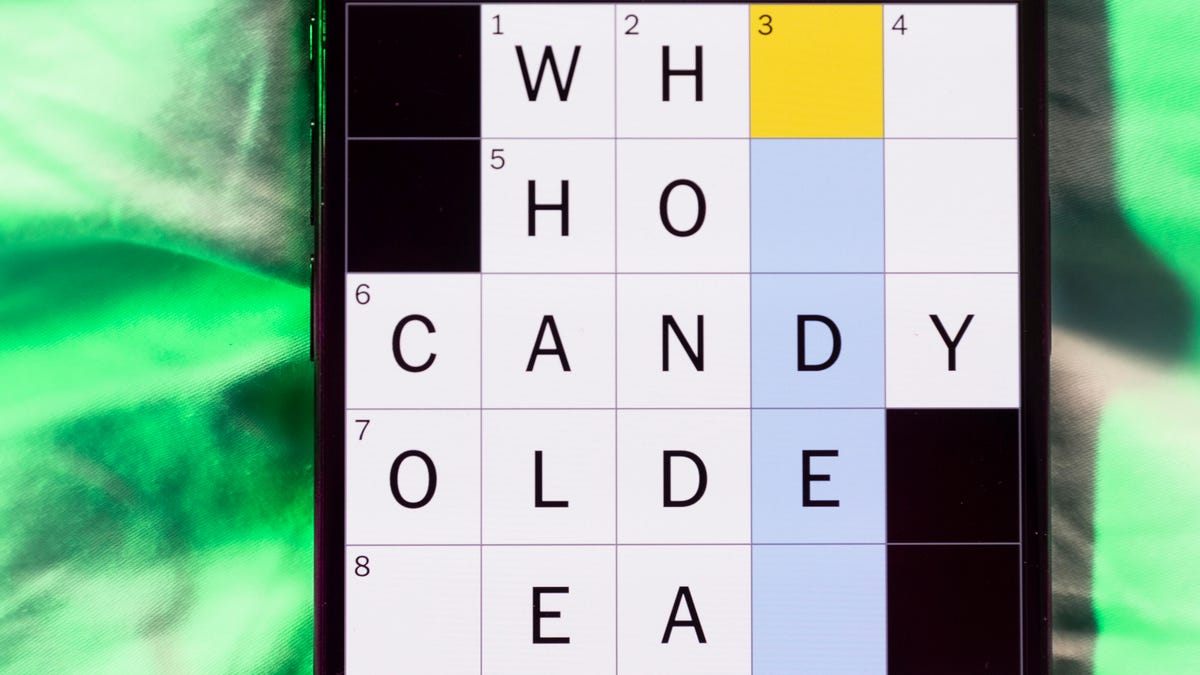
Looking for the most recent Mini Crossword answer? Click here for today’s Mini Crossword hints, as well as our daily answers and hints for The New York Times Wordle, Strands, Connections and Connections: Sports Edition puzzles.
Need some help with today’s Mini Crossword? I thought 4-Down was a bit tricky, but read on for all the answers. And if you could use some hints and guidance for daily solving, check out our Mini Crossword tips.
If you’re looking for today’s Wordle, Connections, Connections: Sports Edition and Strands answers, you can visit CNET’s NYT puzzle hints page.
Read more: Tips and Tricks for Solving The New York Times Mini Crossword
Let’s get to those Mini Crossword clues and answers.
Mini across clues and answers
1A clue: Rubber ducky’s «habitat»
Answer: BATH
5A clue: Coin in Cannes
Answer: EURO
6A clue: Go «Grrrr …»
Answer: GROWL
8A clue: «The other thing I wanted to say …»
Answer: ALSO
9A clue: Street sign in a school zone
Answer: SLOW
Mini down clues and answers
1D clue: Plead
Answer: BEG
2D clue: Vibes, in Gen Z speak
Answer: AURAS
3D clue: Social media menace
Answer: TROLL
4D clue: «Oh, yeah? Explain that to me»
Answer: HOWSO
7D clue: Like a phone battery under 20%
Answer: LOW
Technologies
Today’s NYT Connections: Sports Edition Hints and Answers for Oct. 26, #398
Here are hints and the answers for the NYT Connections: Sports Edition puzzle for Oct. 26, No. 398.
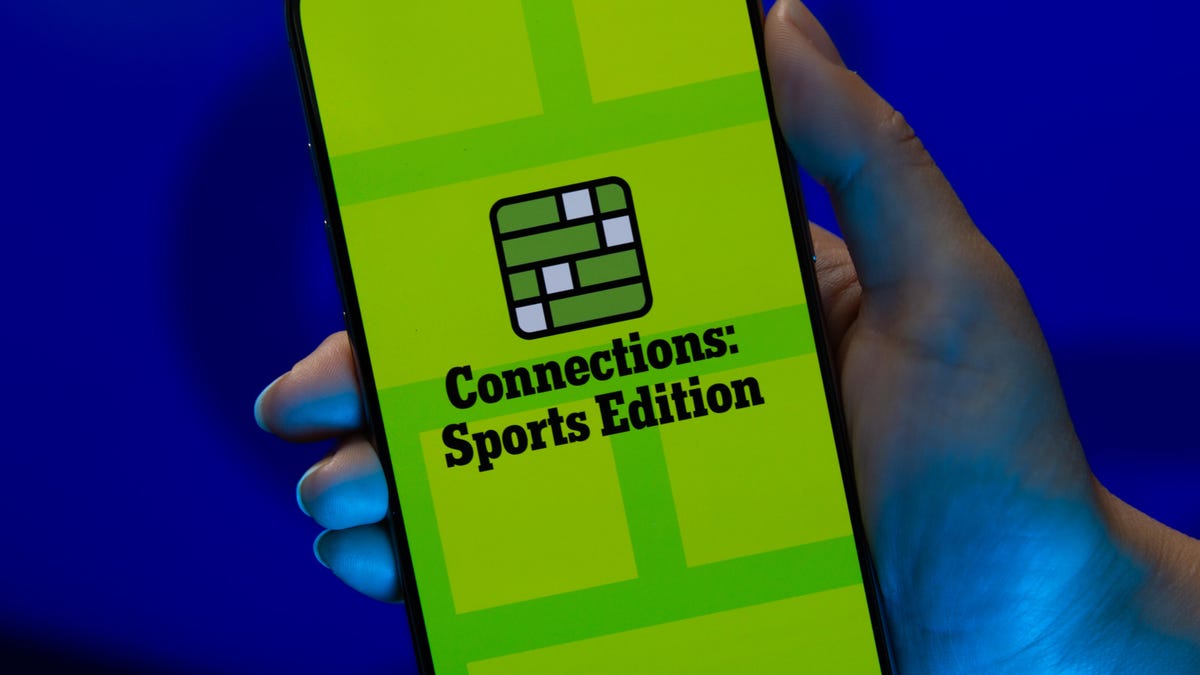
Looking for the most recent regular Connections answers? Click here for today’s Connections hints, as well as our daily answers and hints for The New York Times Mini Crossword, Wordle and Strands puzzles.
Today’s Connections: Sports Edition is a fun one. That purple category — oof, it’s a typical Connections brain-buster. If you’re struggling but still want to solve the puzzle, read on for hints and the answers.
Connections: Sports Edition is published by The Athletic, the subscription-based sports journalism site owned by the Times. It doesn’t show up in the NYT Games app but appears in The Athletic’s own app. Or you can play it for free online.
Read more: NYT Connections: Sports Edition Puzzle Comes Out of Beta
Hints for today’s Connections: Sports Edition groups
Here are four hints for the groupings in today’s Connections: Sports Edition puzzle, ranked from the easiest yellow group to the tough (and sometimes bizarre) purple group.
Yellow group hint: Bunch of players.
Green group hint: College division.
Blue group hint: Knock it out of the park.
Purple group hint: You’ll find a hidden word in these four team names.
Answers for today’s Connections: Sports Edition groups
Yellow group: Club
Green group: ACC teams
Blue group: Hit hard, like a baseball
Purple group: Pro team names that end in another pro team name.
Read more: Wordle Cheat Sheet: Here Are the Most Popular Letters Used in English Words
What are today’s Connections: Sports Edition answers?
The yellow words in today’s Connections
The theme is club. The four answers are group, side, squad and team.
The green words in today’s Connections
The theme is ACC teams. The four answers are Demon Deacons, Eagles, Hurricanes and Wolfpack.
The blue words in today’s Connections
The theme is hit hard, like a baseball. The four answers are belt, club, mash and wallop.
The purple words in today’s Connections
The theme is pro team names that end in another pro team name. The four answers are Hornets, Red Wings, Seahawks and Vikings.
Technologies
Chevy’s New Bolt Electric Car Is Truly Affordable, at Less Than $30,000
The new Chevrolet Bolt is cheaper than other «affordable» EVs, and even fixes the weaknesses of its predecessor.
-

 Technologies3 года ago
Technologies3 года agoTech Companies Need to Be Held Accountable for Security, Experts Say
-

 Technologies3 года ago
Technologies3 года agoBest Handheld Game Console in 2023
-

 Technologies3 года ago
Technologies3 года agoTighten Up Your VR Game With the Best Head Straps for Quest 2
-

 Technologies4 года ago
Technologies4 года agoVerum, Wickr and Threema: next generation secured messengers
-

 Technologies4 года ago
Technologies4 года agoBlack Friday 2021: The best deals on TVs, headphones, kitchenware, and more
-

 Technologies4 года ago
Technologies4 года agoGoogle to require vaccinations as Silicon Valley rethinks return-to-office policies
-

 Technologies4 года ago
Technologies4 года agoOlivia Harlan Dekker for Verum Messenger
-

 Technologies4 года ago
Technologies4 года agoiPhone 13 event: How to watch Apple’s big announcement tomorrow

